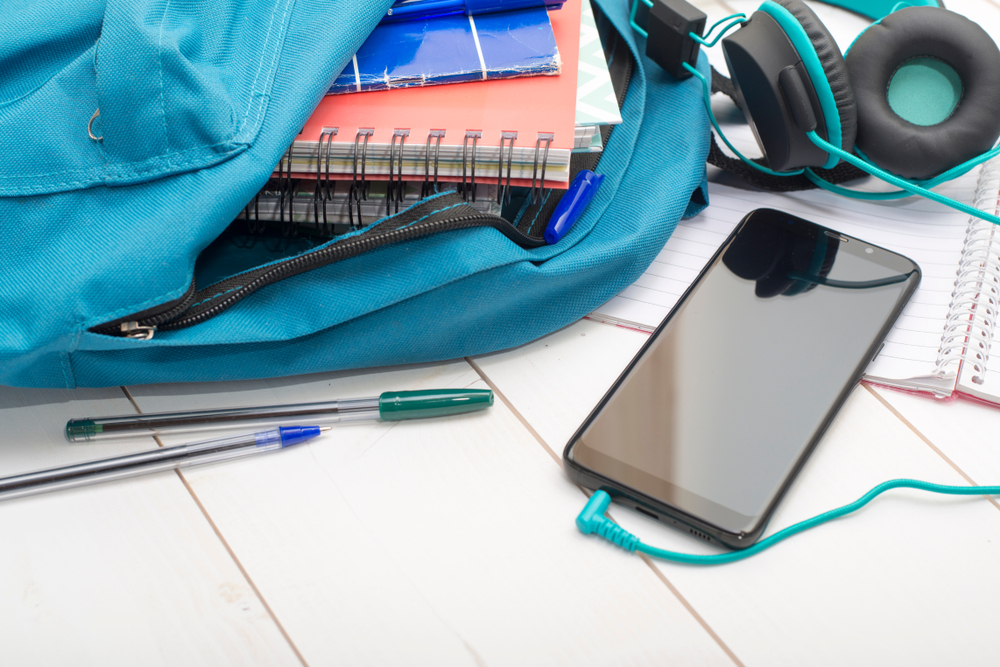In the aftermath of the COVID-19 pandemic, where students adapted to digital classrooms, a new debate has emerged in educational spaces: Should smartphones be banned in schools?
This question has sparked opinions from educators, parents, and students alike, leading to a nuanced discussion on the role of technology in education. While some view the ban as a step toward improving concentration and well-being, others argue that smartphones are now integral to learning and daily life. This article explores the advantages and disadvantages of banning smartphones in schools and the potential impact on students’ lives and academic performance, bolstered by survey results and studies on the topic.
Advantages of a Smartphone Ban
1. Increased Focus and Reduced Distraction
One of the primary reasons behind the push for smartphone bans is the potential to increase students’ focus. A 2019 study from the London School of Economics found that schools that restricted mobile phone use saw a 6.4% improvement in test scores among students, particularly those with lower academic performance. This suggests that removing the distraction of smartphones can enhance academic achievement for students who may be more vulnerable to distractions. Educators argue that without the constant lure of notifications and games, students are more likely to remain engaged in lessons.
2. Improved Social Interactions
Surveys conducted by the Pew Research Center indicate that 38% of teens acknowledge that they spend too much time on their phones, and 72% feel peaceful when they don’t have their smartphone. In a school environment, these pressures can lead to fragmented social interactions. Without smartphones, students may engage more in face-to-face conversations, helping to build stronger communication skills and interpersonal relationships.
3. Reduced Cyberbullying
According to a study by the Cyberbullying Research Center, 37% of students report experiencing cyberbullying at some point in their school years. Proponents of smartphone bans argue that limiting access to smartphones during school hours could reduce the instances of cyberbullying, as students would not be able to engage in hurtful online interactions in real time. This can lead to a safer and more supportive school environment, fostering better emotional well-being.
4. Promoting a Healthy Relationship with Technology
With smartphone usage limited, students may be encouraged to develop healthier relationships with technology. A 2021 survey by Common Sense Media found that teens in the US were spending an average of eight hours and 39 minutes on screens daily (excluding school-related tasks). A school ban on smartphones could help curb this trend by encouraging students to focus on educational activities during the day and setting boundaries between academic and personal use of technology.
Disadvantages of a Smartphone Ban
1. Hindering Technological Skills Development
While banning smartphones may reduce distractions, it also risks limiting students’ ability to develop crucial technological skills. A 2023 report by the World Economic Forum stressed the growing importance of digital literacy and problem-solving skills in an increasingly tech-driven workforce. Students who grew up relying on smartphones for learning during the pandemic may feel disadvantaged if their access to these tools is restricted, potentially affecting their adaptability to future digital environments.
2. Limiting Access to Educational Resources
Smartphones provide students with access to a vast array of educational resources. From learning apps to digital dictionaries and research tools, the use of these devices can complement traditional teaching methods. During the pandemic, students became accustomed to using technology to enhance their learning, and taking away these resources may limit their ability to access information quickly and efficiently.
3. Emergency Communication and Safety Concerns
Parents often argue that smartphones serve an important role in ensuring the safety of their children. In case of an emergency, a smartphone provides a direct line of communication between a parent and their child. A ban could lead to anxiety among both students and parents, as they may feel disconnected or worried about their ability to reach each other during the school day.
4. Increased Stress and Dependence
For many students, smartphones have become tools to manage their daily lives, from checking schedules to setting reminders. Banning phones outright could lead to increased stress, particularly for students who have become reliant on them for organization or relaxation during short breaks. The potential for increased stress could undermine the expected benefits of the ban.
Conclusion
The debate surrounding smartphone bans in schools is complex, with valid arguments on both sides. Survey results and studies suggest that while a ban could lead to increased focus and reduced distractions, it might also limit access to educational resources and hinder technological skill development. The impact of such a decision will vary depending on how schools implement it and how students are supported in transitioning back to a smartphone-free environment. While the smartphone ban may improve social interactions and reduce cyberbullying, careful consideration must be given to its potential effects on academic performance and students’ mental well-being.
As education continues to evolve post-pandemic, the challenge lies in finding a balanced approach to integrating technology into students’ lives without compromising their development or well-being.









